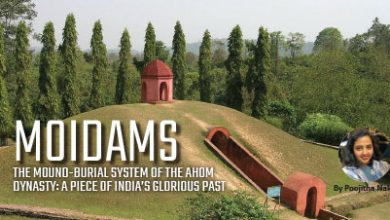

Tanjore painting, also known as Thanjavur painting, has a rich and vibrant history dating back to the 16th century in the town of Thanjavur (Tanjore), located in the southern Indian state of Tamil Nadu. Its origins can be traced to the patronage of the Nayakas, who were the rulers of the Thanjavur region during that time.
The origins of Tanjore painting are believed to be rooted in the rich cultural and artistic traditions of South India, particularly in the temple art and architecture of the region. The earliest Tanjore paintings were likely inspired by the elaborate murals and frescoes adorning the walls of the temples in Tamil Nadu.
The development of Tanjore painting as a distinct art form can be attributed to the influence of various cultural and artistic influences, including the Vijayanagara and Maratha empires, which ruled over the region during different periods. Tanjore painting flourished during the reign of the Maratha ruler Serfoji II (reigned 1798–1832), who was a great patron of the arts. Under his patronage, Tanjore painting reached its zenith, with artists creating exquisite masterpieces adorned with gold foil, semi-precious stones, and vibrant colors.
Originally, Tanjore paintings primarily depicted religious subjects, particularly Hindu gods and goddesses, scenes from Hindu mythology. They were often commissioned by wealthy patrons and adorned the walls of temples and palaces as expressions of devotion and piety. Creating a Tanjore painting is a meticulous and labor-intensive process that involves several steps. These elaborate steps of the typical process involved in making a Tanjore art piece:

Preparation of the Canvas: Tanjore paintings are traditionally done on wooden planks. The first step is to select a sturdy wooden board or plank of suitable size. The surface of the wooden plank is then covered with a cotton cloth and coated with a mixture of chalk powder and a binding medium such as Arabic gum.
Drawing the Sketch: Once the surface is prepared, the artist sketches the outline of the subject using charcoal or pencil. The sketch typically includes the main figures, motifs, and other decorative elements.
Adding the Details: After sketching the basic outline, the artist begins to add intricate details to the painting. This includes facial features, clothing, jewellery, and other embellishments.
Application of Gold Foil: One of the distinctive features of Tanjore painting is the use of pure gold foil to highlight certain elements of the artwork. The areas intended to be highlighted with gold foil are carefully outlined using Arabic gum.

Painting with Colours: Once the gold foil outlines are in place, the artist starts painting the different sections of the artwork using vibrant colours. Traditional mineral pigments such as vermillion, indigo, and lamp black are often used for this purpose. The colours are applied in multiple layers to achieve depth and richness. Tanjore paintings are adorned with semi-precious stones, beads, and pearls to enhance their beauty.
Final Touches: Once the painting is complete, the artist adds final touches to refine the details and ensure that the artwork meets their standards. Finally, the completed Tanjore painting is varnished to protect the surface and enhance its durability. The varnish also adds a glossy finish, accentuating the colours and gold foil accents.
In Tanjore painting, facial features play a crucial role in conveying the emotions, character, and spiritual essence of the depicted figures, often Hindu gods, goddesses, and divine beings. The importance of facial features in Tanjore painting can be understood through several key aspects:
- Expression of Emotions: Facial expressions are meticulously crafted to convey specific emotions and sentiments associated with the depicted deity or character.
- Identification of Characters: Distinctive facial features help viewers identify the depicted figures and understand their significance within the context of Hindu mythology and religious narratives. Each deity or character in Tanjore painting is characterized by unique facial attributes, such as the gentle smile of Lord Krishna or the resolute gaze of Goddess Durga with facial expressions, gestures, and attributes are associated with specific deities and divine qualities, helping to convey their divine nature and attributes.
- Spiritual Connection: The expressive facial features in Tanjore painting serve to establish a spiritual connection between the viewer and the divine beings depicted in the artwork. Through the subtle nuances of facial expression, artists seek to evoke a sense of reverence, devotion, and awe in the viewer, facilitating a deeper engagement with the spiritual themes and narratives depicted in the painting.
- Aesthetic Appeal: Beyond their symbolic and spiritual significance, well-rendered facial features contribute to the overall aesthetic appeal and visual impact of Tanjore painting. Overall, facial features play a central role in Tanjore painting, serving as a powerful means of expression, communication, and connection between the divine and the human realm, while also enhancing the aesthetic quality and narrative richness of the artwork.
Tanjore paintings are often priced at a premium because of the requirements of intricate craftsmanship, cultural significance, quality of materials which includes 24 carat gold foil, semi-precious stones and most importantly the amount of time and effort required to finish the painting.
As a Tanjore painting artist myself, I feel, the combination of artistic skill, quality materials, cultural significance, time-intensive process, and limited availability contributes to the higher cost of Tanjore paintings, making them prized possessions for collectors and art connoisseurs alike for both home décor as well as for religious purposes. But making a tanjore art is not just a piece of painting but a test of patience, perseverance and delicate work. I have always enjoyed making tanjore art as a relaxant as well as a piece of joy for myself as well as the viewer!






